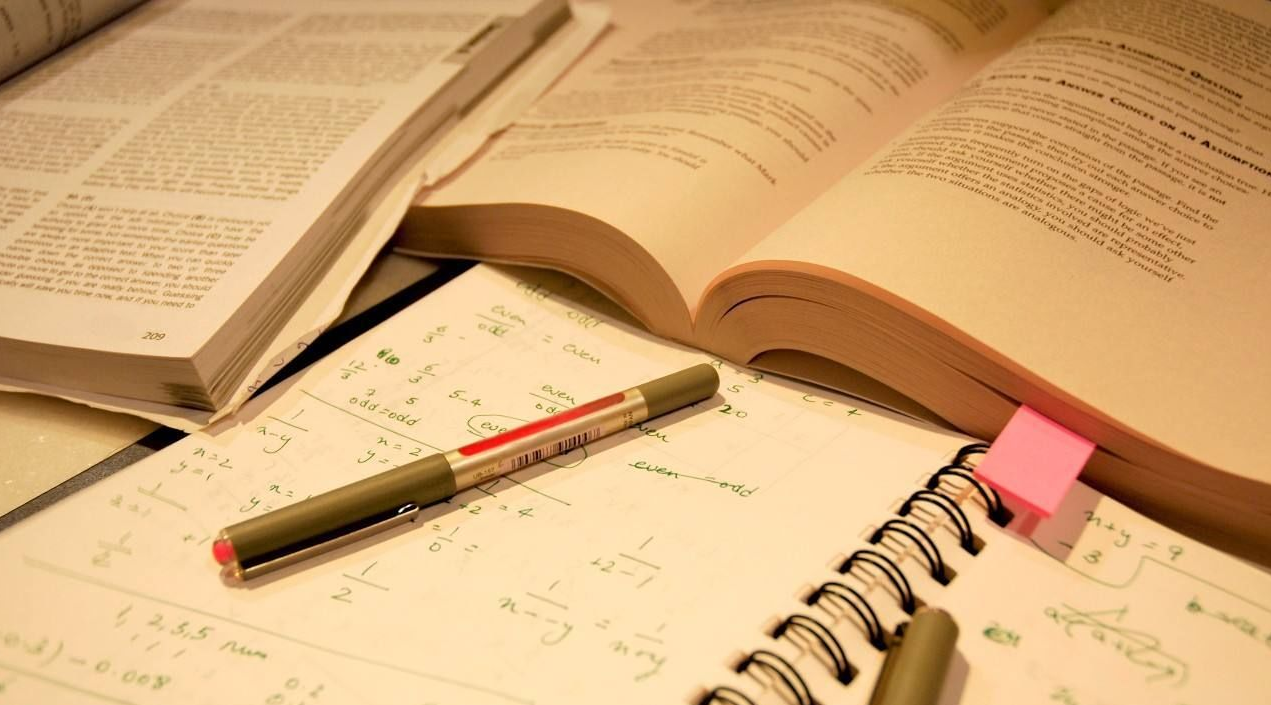01
基础知识总复习
一、大写字母的运用
1.句首第一个字母大写。
2.人名、国名、节日名、语言名、组织名等专有名词的首字母大写。
3.星期、月份的首字母大写。
4.特指的学校、政府、党派、委员会或涉及具体人名的称呼或职位,首字母大写。
5.某些特殊词汇、缩略词、标志语、特殊用语等,首字母大写或全大写。
6.句中要强调的部分通常全大写。
7.诗的每一行首字母要大写。
二、与字母发音相同的单词
如:Bb-bee, Cc-see/sea, Rr-are, Tt-tea, Ii-I/eye, Oo-oh, Uu-you, Yy-why.
三、缩略形式
如:I’m = I am,
you’re = you are,
she’s = she is/she has,
won’t=will not,
can’t =can not,
isn’t=is not, let's = let us.
四、同音异形词
如:to/too/two,
their/there,
right/write,
pair/pear,
four/for,
know/no,
sun/son.
五、反义词
如:day-night,
come-go,
yes-no,
up-down,
big-small.
short-long all,
fat-thin,
low-high,
slow-fast,
六、名词复数的变化规则
1.一般情况下,直接加s,
如:book-books, bag-bags, cat-cats, bed-beds.
2.以s,x,sh,ch 结尾,加es,
如:bus-buses, box-boxes, watch-watches.
3.以辅音字母加y 结尾,变y 为i, 再加es,
如:family-families, hobby-hobbies.
4.以f 或fe 结尾,变f 或fe 为v, 再加es,
如:thief-thieves, knife-knives.
5.以o 结尾,加es,
如:mango-mangoes.
加s,如:radio-radios,photo-photos.
6.不规则变化,
如:man-men,
woman-women,
child-children,
foot-feet,
tooth-teeth.
7.不可数名词
有:bread, juice, tea, coffee, water, rice 等。
(不可数名词 相对应的be 动词是is/was)
七、名词所有格
表示人或物品所属关系时,就需要使用名词所有格。
名词所有格的构成有以下规 则:
1.一般情况下,在名词的末尾加’s 构成。
如:Tom’s book
2.以“-s”结尾的复数名词的所有格,只在其末尾加’。
如:our teachers’ books
3.表示几个人共同拥有的东西时,只在最后一个名字上加所有格。
如:Su Hai and Su Yang’s bedroom
八、a, an 和the 的用法
1.单词或字母的第一个读音是辅音读音:a book, a peach, a “U”.
单词或字母的第一个读音是元音读音:an egg, an hour, an “F”.
2.the 要注意的:球类前面不加the,乐器前面要加the,序数词前面要加the。
九、人称代词和物主代词
1
人称代词
1.人称代词分为第一、第二、第三人称,且有单复数之分。
2.人称代词的主格在句中做主语,一般用在动词前(疑问句除外)。
3.人称代词的宾格在句中做宾语,多用于动词、介词后。
4.人称代词能代替表示人称的名词。
2
物主代词
1.表示所有关系的代词叫做物主代词。
2.物主代词分为形容词性物主代词和名词性物主代词。物主代词也有人称和数的 变化。
3.形容词性物主代词起形容词的作用,后面一定要跟名词,表示该名词所代表的 事物是属于谁的。
4.名词性物主代词=形容词性物主代词+名词。
如:This is my bag.= This is mine.
3
熟记人称代词和物主代词的绕口令
我是" I " ,你是“you", "he, she, it" 他,她,它" 我的“my”,你的"your", 他的"his", 她的"her"
主 格 I you he she it we you they
宾 格 me you him her it us you them
形 物 my your his her its our your their
名 物 mine yours his hers its ours yours theirs
十、形容词、副词的比较级
1.形容词的比较级:用于两者的比较。
(1)基本句式的构成:
A(主格)+ be + 形容词的比较级 + than + B(宾格).
(2)表示一样的情况时用原级,结构是:
as + 原级 + as
2.副词的比较级:
(1)基本句式的构成:
A(主格)+ 动词 + 副词的比较级 + than + B(宾格).
(2)表示一样的情况时用原级,结构是:as + 原级 + as
3.形容词、副词比较级的变化规则:
(1)单音节词末尾加er;
(2)单音节词如果以字母e 结尾,加r;
(3)重读闭音节词如果末尾只有一个辅音字母,须双写这个字母,再加er;
(4)以辅音字母加y 结尾,变y 为i,再加er;
(5)双音节和多音节词的比较级在原级前加more;
(6)不规则变化, 如:well-better, much/many-more。
十一、基数词和序数词
1.one--first,
two--second,
three--third,
five--fifth,
nine--ninth,
twelve--twelfth,
twenty-twentieth,
forty-one--forty-first.
序数词前一定要加the。
2.基数词变成序数词的方法:
(1)直接在基数词词尾加上th,
如:seventh 第七,tenth 第十,thirteenth 第 十三;
(2)以y 结尾的基数词,变y 为ie,再加上th,
如:twentieth 第二十。
(3)不规则变化,
如:first 第一, second 第二, third 第三,fifth 第五, eighth 第八,ninth 第九,twelfth 第十二。
(4)基数词“几十几”变为序数词时,表示“几十”的基数词不变,只把表示 “几”的基数词变成序数词,
如twenty-first 第二十一。
3.序数词的缩略形式是由阿拉伯数字和序数词的最后两个字母构成的,
如:1 st , 2 nd , 3 rd , 4 th 。十二、be 动词(am, is, are)
1.口诀:我用am, 你用are, is 用在他她它,复数全用are。
2.否定形式:am not(没有缩写形式), is not=isn’t, are not=aren’t。
3.过去式:am/is(was), are(were)。
十二、情态动词
(can,must,could,would,may,shall,should)
1.情态动词后面用动词原形。
2.其否定形式是在情态动词的后面加not。
十三、助动词
(do, does, did)
1.do, does 用于一般现在时,does 用于第三人称单数,其余一律用do。
2.did 用于一般过去时。
3.它们的否定形式为:do not=don’t, does not=doesn’t. did not=didn’t.
十四、介词 in 的用法
1.用在某范围或某空间内,
如:in the desk
2.在一段时间内,
如:in the morning
3.以,用……方式,
如:in English in 和on 的区别:树上长出来的用on,不是树上长出来的则用in。
in, on, at 的区别:
in, on, at 都可以用来放在时间前面,但是in 后面一般是morning,afternoon, evening,月份、年份、季节或者指某一段时间内;
on 用在具体某一天,如:on Sunday morning;
at 一般用在某个假期期间(不是指具体的某一天),它还可 以用在具体的时间,如:at Spring Festival, at five o’clock.
小学英语教材中出现的介词有:
in, on, from, of, by, about, for, under, behind, after, before, with, near, off, at, //www.58yuanyou.comto, around, nearby 等。
十五、there be 结构与have, has 的区别
there be 结构:
1.there be 结构表示“某地存在着什么事物或人”。
在一般现在时中,there be 结构应该用there is 或there are 表示;
在一般 过去时中,there be 结构则应该用there was 或there were 表示。
2.主语是不可数名词或单数可数名词时用is(was),是复数时用are(were)。
3.there be 结构遵循就近原则。
4.在陈述句中为了强调地点,可将介词短语提到句首。
5.否定句:在be 动词后面加not,如果句中有some,要变成any。
6.一般疑问句:把be 动词提到句首,首字母大写,句尾改成问号。
7.What is + 地点介词短语?(无论主语是单数还是复数都用is)
there be 结构与have, has 的区别:
there be 表示某地存在着什么事物或人;
have(has) 表示某物或人拥有某物。
十六、现在进行时
1.现在进行时表示现在正在进行或发生的动作。
常与now 连用,当句首有look, listen 时,也用现在进行时。
2.现在进行时肯定句的基本结构为:
主语+ be 动词+动词的现在分词(doing, 即动词的ing 形式)
(1)其中be 动词随着主语的变化而变化,be 动词包括am, is, are。
(2)动词现在分词的变化规则:
A 一般情况下,直接在动词后加ing,
如:cook-cooking.
B 以不发音的e 结尾的动词,去掉e 后加ing,
如:make-making, dance-dancing.
C 以重读闭音节结尾的动词,双写末尾字母后加ing,
如:run-running, swim-swimming.
D 以ie 结尾的动词,变ie 为y,再加ing,
如:lie-lying, die-dying.
3.现在进行时的否定句:
在be 动词后面加not。
4.现在进行时的一般疑问句:
把be 动词提到句首,首字母大写,句尾改成问号。
十七、一般现在时
1.一般现在时表示一般情况下经常发生的动作或存在的状态。常与 usually, sometimes, often, always 等词连用。
2.一般现在时的谓语动词为be 动词时,be 的变化遵循“我用am, 你用are, is 用在他她它,复数全用are”的规律。
3.一般现在时的谓语动词为其它动词时,当主语为第三人称单数时,动词要用第 三人称单数形式。
如:Mary likes Chinese.玛丽喜欢汉语。
4.动词第三人称单数的变化规则:
(1)一般的动词,直接在词尾加s,
如:cook-cooks, like-likes.
(2) 以s,x,sh,ch,o 等结尾的动词,加es,
如:wash-washes, watch-watches, go-goes, do-does.
(3)以辅音字母加y 结尾的动词,变y 为i, 再加es,
如:study-studies.
(4)不规则变化,如:have-has.
5.一般现在时的变化:
(1)be 动词的变化。
否定句:主语+ be + not +其它。
如:He is not a worker.他不是一名工人。
一般疑问句:Be +主语+其它?
如:Are you a student?
特殊疑问句:疑问词+一般疑问句?
如:Where is my bike?
(2)行为动词的变化。
否定句:主语+ don't( doesn't ) +动词原形(+其它)。
如:I don't like bread.
当主语为第三人称单数时,要用doesn't 构成否定句。
如:He doesn't like PE.
一般疑问句:
Do( Does ) +主语+动词原形+其它?
如:Do you often play chess?
当主语为第三人称单数时,要用does 构成一般疑问句。
如:D原由网oes she like PE?
特殊疑问句:疑问词+一般疑问句?
如:How does your father go to work?
十八、一般过去时
1.一般过去时表示在过去的某一时间里发生的事情,我们用动词的过去式来表 示。
常与yesterday, last night,just now, a moment ago 等表示过去的时间 状语连用。
2.be 动词在一般过去时中的变化:
(1)am 和is 在一般过去时中变为was。(was not=wasn’t)
(2)are 在一般过去时中变为were。(were not=weren’t原由网)
(3)带有was 或were 的句子,其否定句、疑问句的变化和is, am, are 一样,即 否定句在was 或were 后加not,一般疑问句把was 或were 提到句首。
3.句中没有be 动词的一般过去时的句子:
否定句:didn’t +动词原形,
如:Jim didn’t go home yesterday.
一般疑问句:
在句首加did,句子中的动词过去式变回原形,
如:Did Jim go home yesterday?
4.动词过去式变化规则:
(1)一般情况下,在动词原形后面加ed,
如:cook-cooked.
(2)以不发音的e 结尾的单音节词,只加d,
如:taste-tasted.
(3)以辅音字母加y 结尾的词,变y 为i,再加ed,
如:study-studied.
(4) 以重读闭音节或r 结尾,末尾只有一个辅音字母的词,要双写这个字母后再 加ed,
如:stop-stopped.
(5)不规则变化,
如:go-went, sit-sat.
十九、一般将来时
1.一般将来时表示将要发生的动作或存在的状态及打算、计划或准备做某事。
常 常与tomorrow, next Sunday 等时间状语连用。
2.基本结构:
(1)be going to do sth.
(2)will do sth.
3.否定句:
在be 动词(am, is, are, was, were)或will 后加not。
4.一般疑问句:
把be 动词或will 提到句首,some 改为any, and 改为or,第一、 二人称互换。
二十、现在完成时
1.表示过去发生的某一动作对现在造成的影响或结果,常与一些时间状语,
如:already, yet, ever, never, just, before, once, twice (次数)等连用,
也可以和包括现在在内的时间状语,如these days, today, recently, this year, so far(=by now)等连用.
2.基本结构:
助动词have/has + 动词的过去分词 e.g. I have already posted the letter.
二十一、some /any
肯定句:I have some toys in my bedroom.
一般疑问句和否定句中:Do you have any brothers or sisters? He doesn’t have any pencils in his pencil case.
表示建议、请求等:Would you like some juice? Can I have some stamps?
二十二、祈使句
Sit down, please. Don’t open the door.. Let’s go to the park.
02
常见易错题汇总
1.All the balls are not round. 翻译成汉语:
所有的球都不是圆的。()
并不是所有的球都是圆的。(√)
[析] all, every, both等词和not连用时,not通常放在all, every, both的后面,一般情况下表示部分否定,意为"并非……都……"。
2.The Smiths have moved Beijing. ()
The Smiths have moved to Beijing. (√)
[析] 不及物动词后接名词或代词作宾语时,要在动词之后加上适当的介词;但不及物动词后接home, here, there等副词作宾语时,动词之后不必加任何介词。
3.The box is too heavy for him to carry it. ()
The box is too heavy for him to carry. (√)
[析] the box既是这句话的主语, 也是不定式to carry的逻辑宾语,若句末再加上it,就和the box重复了。
4.Each of the boys have a pen. ()
Each of the boys has a pen. (√)
[析] 复数名词前有表个体的each of, one of, every,either of等词组修饰,或有表否定的neither of, none of 等词组修饰时,谓语动词要用单数形式。
5.Neither he nor you is good at English. ()
Neither he nor you are goo原由网d at English. (√)
[析] either... or..., neither... nor..., not only..., but also... 等词组连接句子的两个主语时,谓语动词遵循"就近一致原则", 即由靠近谓语的那个主语决定谓语的人称和数用何种形式。
6.Ten minus three are seven. ()
Ten minus three is seven. (√)
[析] 用英语表示加(plus)、减(minus)等数学运算时,谓语动词也用单数形式。
7.The number of the workers in this factory are about 5,000. ()
The number of the workers in this factory is about 5,000. (√)
[析] the number of表示"……的数量",谓语动词用单数形式;a number of 的意思是"若干"或"许多",相当于some或a lot of,和复数名词连用,谓语动词用复数形式。
8. Hello! I have important something to tell you. ()
Hello! I have something important to tell you. (√)
[析] 形容词或动词不定式修饰不定代词作定语时,修饰成分要置于不定代词之后。
9. His son is enough old to go to school. ()
His son is old enough to go to school. (√)
[析] enough作形容词修饰名词时,可以放在名词前,也可放在名词后;作副词修饰形容词或副词时,只能放在形容词或副词之后。
10. Here is your sweater, put away it.()
Here is your sweater, put it away. (√)
[析] put away, pick up, put on等"动词+副词"构成的词组后接代词作宾语时,代词只能放在动词和副词之间。
11. Look! Here the bus comes.()
Look! Here comes the bus.(√)
[析] 在以here, there引起的陈述句中,若句子的主语是名词,要用倒装语序,即用"Here /There+动词+名词"结构;但主语若是代词时,则不用倒装语序, 即用"Here/There +代词+动词"结构。
12. I do well in playing football, _______. (我妹妹也行。)
A. so my sister does() B. so does my sister(√)
[析] "so+be动词/助动词+主语"的倒装结构表示前面所述情况也适用于后者,意为"……也是这样";"so+主语+be动词/助动词"的陈述结构表示对前述情况的肯定,意为"……确实如此"。
13.重庆比中国的其他城市都大。
Chongqing is larger than any city in China. ()
Chongqing is larger than any other city in China. (√)
[析] "any city in China"包括了重庆这座城市, 同一事物自己与自己不能做比较,只有在city 前加上other才能表示重庆和中国的其它城市比较大小。
14. His sister married with a teacher last summer.()
His sister married a teacher last summer. (√)
[析] 表达"A和B结婚",要用A married/will marry B。这时务必要避免受汉语影响使用A married/will marry with B。
15. There is going to have a film tonight. ()
There is going to be a film tonight. (√)
[析] 一般将来时用在 There be 句式中时,be going to或will之后的动词原形只能用be,也就是说要用There is (are) going to be.... / There will be....。
16. 例I'll go hiking if it won't rain next Sunday. ()
I'll go hiking if it doesn't rain next Sunday.(√)
[析] 习惯上在含有时间状语从句原由网和条件状语从句的复合句中,如果主句的谓语动词用了一般将来时,从句的谓语动词要用一般现在时表示将来的动作。
17.例 Teacher told us yesterday that the earth went around the sun. ()
Teacher told us yesterday that the earth goes around the sun. (√)
[析] 习惯上在含有宾语从句的复合句中,主句的谓语动词用了一般过去时,从句的谓语动词要用过去的某种时态。但如果从句表述的是一客观事实或客观真理时,则不受主句时态的影响,而用一般现在时。
18. We found ___A____ necessary to protect the environment.
A. it B. this C. that D. what
【考点】 "主语+find+ it +adj. + to do sth"为一常用句型,意为"某人发现做某事……",其中it为形式宾语(此时不可用this/that/one等代词替换),真实的宾语为后置的不定式短语。
19. 〔误〕 He was good for skating.
〔正〕 He was good at skating.
〔析〕 be good at 为"擅长某事",而be good for somebody为对某人很好。
20.---- Excuse me, is the supermarket far from here?---- No,it's about _______.
A. 7 minutes walk B. 7 minute walk C. 7 minutes' walk D. 7 minute's walk
[析]答案为C。本题考查名词所有格用法。当名词的复数以-s结尾时,则只需要加"'"即可,则"7分钟的距离"为"7 minutes' walk"。
21. You can not imagine how much I ______ on this dress. Is it beautiful?
A. paid B. took C. cost D. spent
[析] 答案为D。本题考察四个表"花费"的动词辨析。主语为人,且和介词on搭配的动词是spend。
22. ---- Do you know _____ university student who is talking with Joe?
---- Yes, she,s my cousin, Kate.
A. a B. an C. the D. /
[析] 答案为C。university虽然以元音字母u开头,但其前若使用不定冠词时,则要用a.不过此题中不能使用不定冠词,而是特指和Joe说话的那个大学生,故要选the。
23. The number of giant pandas is getting ______ because their living areas are becoming farmlands.
A. less and less B. larger and larger C. smaller and smaller D. fewer and fewer
[析] 答案为C。句意为"大熊猫的数量越来越少因为他们的生存空间正逐渐变成农场"。本题中四个选项都是"比较级+ and + 比较级"的结构,表示"越来越……"。主语为number,只能和large或small搭配。
24. Be careful when you come _______ the street,because the traffic is very busy at the moment.
A. across B. behind C. between D. over
[析] 答案为A。本题考察方位介词的用法。"过马路"一般为表面横穿,因此要用across。
25. ---- Do you often clean your classroom?
---- Yes, our classroom ______ every day.
A. clean B. cleans C. is cleaned D. Cleaned
[析] 答案为C。句中有every day,主语为our classroom,故要用一般现在时的被动语态。
26. Lucy usually cleans the cage every two days. (对画线部分提问) _______ Lucy usually clean the cage?
[析] 答案为How often does。对every two days提问要用how often。
27. I didn't understand __________,so I raised my hand to ask...
A. what my teacher says B. what does my teacher say C. what my teacher said D. what did my teacher say
[析] 答案为C。本题为宾语从句,由于需要用陈述语序可排除B、D;另外,主句时态为一般过去时,则从句也要用对应的过去时态,故还可排除A。
28. ---- How much ______ the shoes? ---- Five dollars ______ enough.
A. is;is B. are;is C. are;are D. is;are
[析] 答案为B。shoes作主语时,谓语动词应用复数形式;five dollars是一个整体,应按单数对待。
29. In the beginning of the book, there are some interesting stories. ()
At the beginning of the book, there are some interesting stories. (√)
〔析〕 at the begining与at the end都是指某事物的开始与结束部分,均不指时间范围,而in the beginning 则是指开始一段时间。in the end=at last是指"最终,终于"之意。
30. Till the end of next week. I will have finished this work. ()
By the end of next week. I will have finished this work. (√)
〔析〕 by 引起的时间状语表示了动作的截止点,其意思为"不迟于某一时刻将工作做完",所以主句一般是完成时态。当然可以有将来时态,如:Ill be there by five oclock.而till则表达其一动作一直持续到某一时刻,但句中的动词一定要用持续性动词,而瞬间的截止性动词应用其否定句式,如:I wont finish this work till(until) next weekend.
31. 〔误〕 He came to London before last weekend.
〔正〕 He had come to London before last weekend.
〔析〕 before 一般要与完成时连用,而ago则与一般过去时连用。
32. 〔误〕I have studied English for three years gince I had come here.
〔正〕I have studied English for three years since I came here.
〔析〕since用来表达主句动作的开始时间,所以其引出的从句中应为过去时,而不能用完成时态
33. 〔误〕 I can help you repair this bike. You will get it after two hours.
〔正〕 I can help you repair this bike. You will get it in two hours.
〔析〕中文经常讲两小时之后来取,两天内会修好,而这个介词在英文中要用in而不要用after。其原因有二,①after 多用于过去时,如:I arrived in New York. After three days, I found a job in the bank. ② after 加时间是表达一个不确定的时间范围,如:after three days, 即三天之后的哪一天都可以。所以在许诺若干时间内会完成某事时,一定要用介词in。
34. 〔误〕 Three days after he died.
〔正〕 After three days he died.
〔析〕 after 与 later都可以用来表达一段时间之后,但它们所处的位置不同,after 在时间词前,而later在时间词后。
35.〔误〕 She hid herself after the tree.
〔正〕 She hid herself behind the tree.
〔析〕 after多用来表达某动作之后,所以有的语法书中称它为动态介词,如:I run after him. After finishing my homework, I went to see a film. 而behind则多用于静态事物之后。
36.〔误〕 There is a beautiful bird on the tree.
〔正〕 There is a beautiful bird in the tree.
〔析〕 树上长出的果实,树叶要用on, 而其他外来的人、物体均要用in the tree.
37.〔误〕 Shanghai is on the east of China.
〔正〕 Shanghai is in the east of China.
〔析〕在表达地理位置时有3个介词:in, on, to。in表示在某范围之内; on表示与某地区接壤;to则表示不相接。如:Japan is to the east of China.
38.〔误〕 I arrived at New York on July 2nd.
〔正〕 I arrived in New York on July 2nd.
〔析〕 at用来表达较小的地方,而in用来表达较大的地方。at常用于at the school gate, at home, at a bus stop, at the station, at the cinema, at a small village。
03
常考句型分类汇总
完整版打印版领取方式如下:

1、点击头像进入主页然后再关注,2、接着点击“私信”发送【01】即可



